
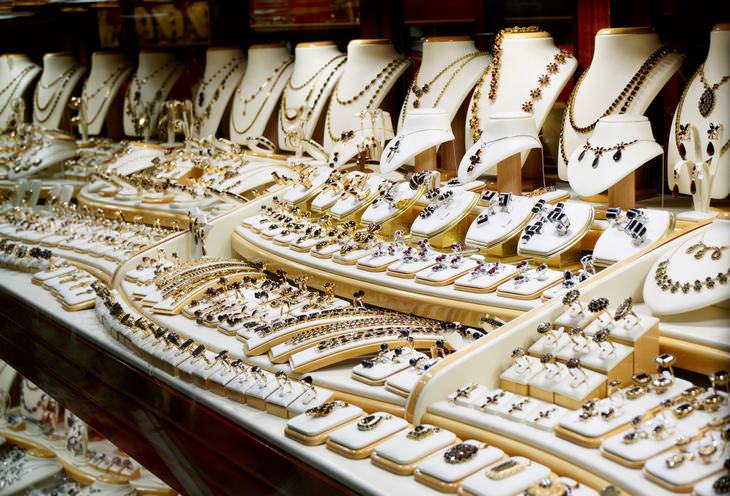
1. Know the hallmark
One of the easiest ways to identify whether a metal is real or fake is to identify the hallmark. You can find a list of hallmarks that different metals have online, and compare this information with the information on your jewelry item. The numbers should be accurate and easy to read. If not, you're better off not buying such an item. To understand the amount of precious metal according to the hallmark, simply place a comma after the second digit in your mind. The number that you get will show the percentage of precious metal. For instance, consider the hallmark 925. This means that there is 92.5% of pure metal.
Gold hallmarks: 375, 500, 583, 585, 750, 916, 958, 999
Silver hallmarks: 800, 830, 875, 925, 960, 999
Platinum hallmarks: 850, 900, 950, 999
2. Does it magnetize?
Covering steel or other alloys have a high content of iron which is established through gilding, or the imitation of gilding - a widespread procedure when producing jewelry. If a genuine item has a high content of precious metal, it shouldn't magnetize. For this reason, taking a magnet with you if you are going to a jewelry store can be a good idea.
3. Are there any damages?
Metals like silver and platinum look very similar and that's why it is so easy to replace the expensive metal with a cheap one. A fake made of silver will give itself away with a black shade and flexibility. Platinum doesn't have these properties. Meanwhile, gold leaves golden traces on unburned and unglazed ceramic tiles or porcelain, while the traces from fakes will be gray or black. If checking a jewelry item using this method, do so on some unnoticeable place, such as a buckle.
Applying compositions
1. Using chalk

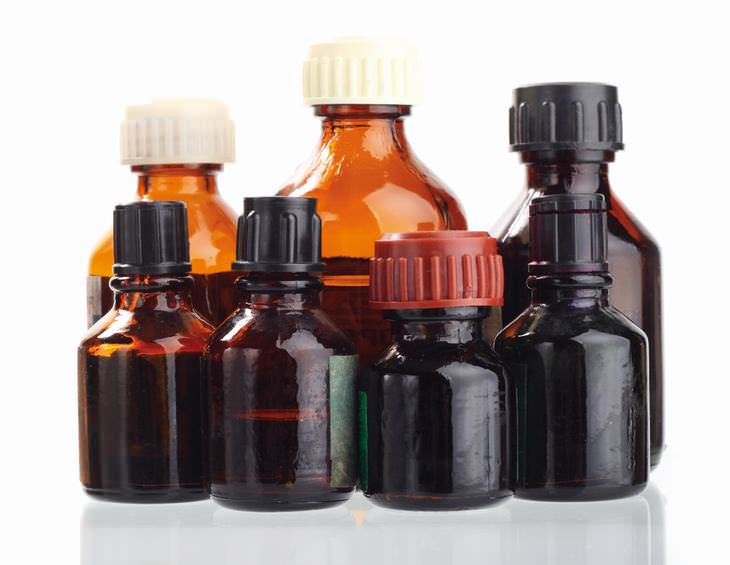
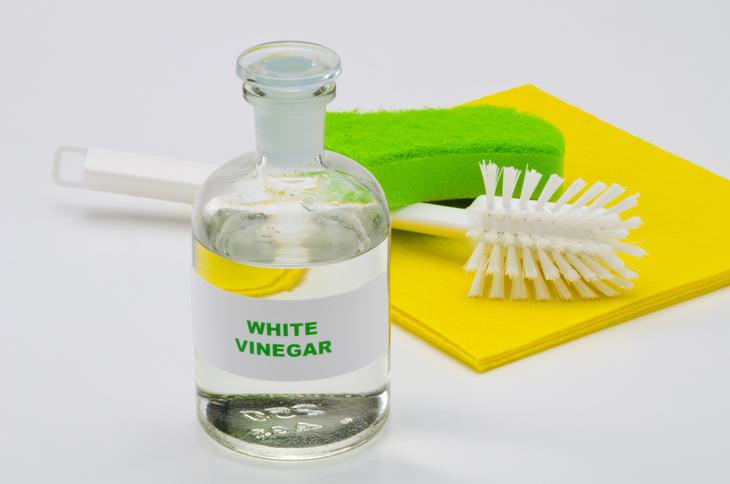
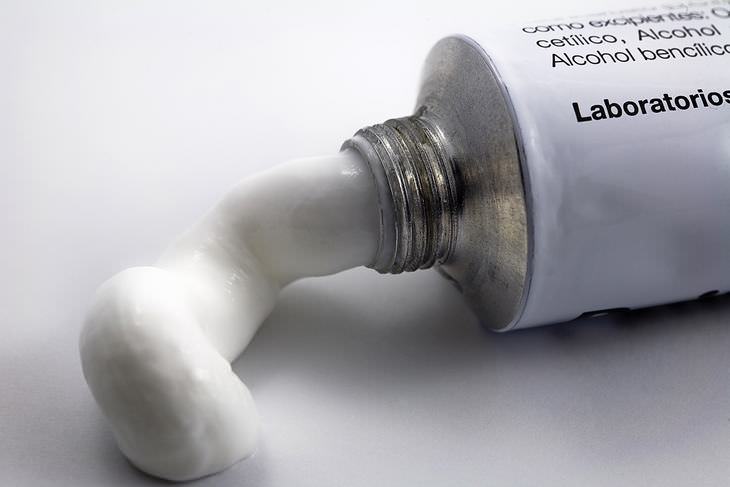
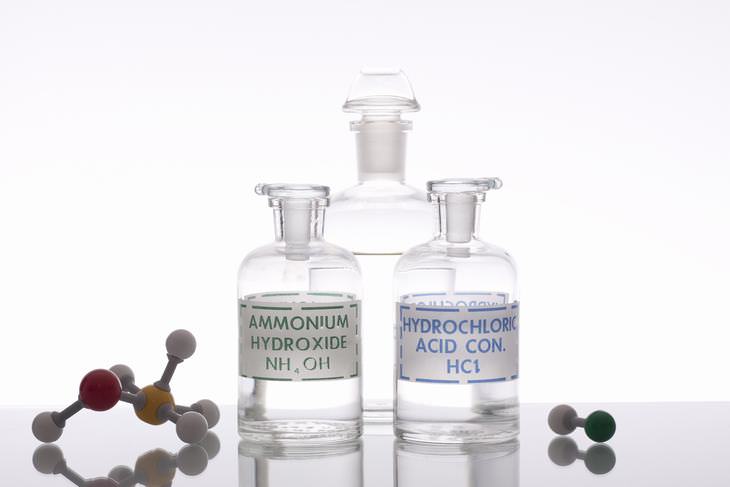
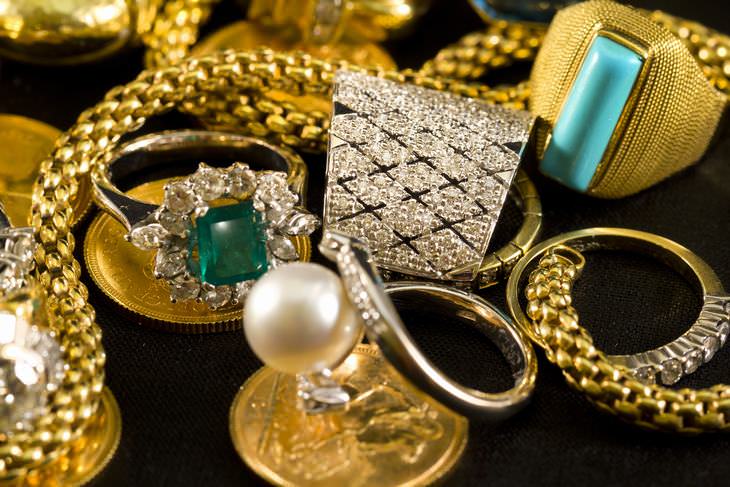
1. Diamond
A natural gem won't fog up when you breathe on it because it has a high thermal conductivity.
2. Emerald
In order to determine the authenticity of an emerald, examine the structure of the gem under a magnifying glass. A genuine emerald doesn't have tubular or spiral patterns inside. And a real emerald conducts warmth badly. So it always feels cold to touch.
3. Pearl
Genuine pearls are expensive which is why you shouldn't expect an item that doesn't cost much to be genuine. To determine the authenticity of a pearl, it will be enough to check it with your teeth. If you try to bite a pearl you will feel it creak like sand. Artificial pearls don't have such properties.
4. Amber
Place a piece of amber into a glass with saltwater, 3tsp of salt will be enough. An item made of glass or plastic, or made of epoxy resin will sink instantly. If it is genuine, it will float because the density is less than that of the saltwater. You can also try rubbing amber with a woolen fabric, which will give you an electric shock and it will attract small threads and dust to itself.

5 Turmeric-Based Facial Masks For Removing Hair
Turmeric is a wonderful spice from India that has a whole myriad of different applications. Here's how to make 5 turmeric-based masks for unwanted hair removal.

Your Herb Garden Will Flourish with These Helpful Tips!
The following six tips will help you grow an abundance of herbs round the year.

All You Ever Wanted to Ask About the Universe
Discover more about the universe by reading through these facts.

Minute Clinic: Healthy Habits That Take Under 60 Seconds
These healthy habits all take less than a minute to perform, yet have significant benefits for your well being.

Suffer From Knee Pain? Here Are 6 Moves You Can Do
Banish knee pain today with these 6 exercises.

Surprise Your Kids With This Fake Snow Recipe!
Learn how to make your very own snow from the comfort of your own home thanks to this brilliant guide.

Norovirus Cases Rise This Season: What You Need to Know
Cases of norovirus, commonly called "winter vomiting disease," are spreading across the United States earlier than usual this season, with levels rising since mid-October according to wastewater surveillance data.

A 'Brain Fog' Epidemic? Study Shows a Worrying Trend
Analysis of over 4.5 million U.S. survey responses spanning a decade (2013–2023) shows a rise from 5.3% to 7.4% in reported cognitive disability nationwide, with an exceptional surge in the 18–39 age group and a clear influence of income and educatio
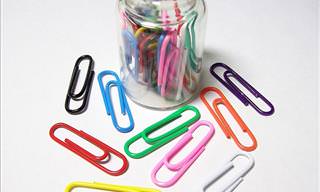
12 Useful Tips That Help Solve Problems Around the House!
Want to skip the ironing? Have reusable grocery bags all over the place? With the following 12 tips, you can solve various problems in life ...

How 11 Everyday Actions are Shortening Your Car's Lifespan
These common mistakes are wrecking your car’s longevity.

Say Goodbye to Armpit Stains with This Natural Deodorant
Naturally remove armpit stains with this effective remedy.
 11:31
11:31
Lessons in Etiquette: 21 Rules You Can’t Ignore
Watch etiquette expert William Hanson share some important tips that all of us must know.

Fix Any Fence Problem With These 10 Video Tutorials!
10 video tutorials that'll cover most fence DIY issues, from fixing various issues to installation and painting.
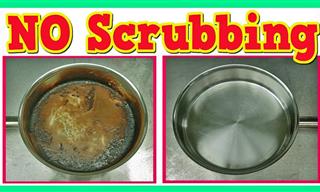 3:15
3:15
Cleaning Tips: The Best Ways to Save Your Burnt Pot
Cleaning a scorched pot without scrubbing is possible! Here are some tips to make it look as good as new with ease.
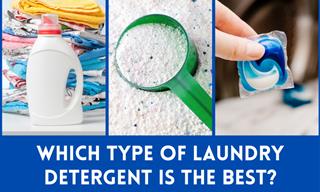
Pros & Cons of Cleaning Pods vs Powder vs Liquid
When choosing between liquid detergent, powdered detergent and single dose pods, there are a few things you should consider.

Heed These Great Tips as They Might Save You One Day
Here are 7 simple tips that we should all know, because they may just save us some day.

7 Cleaning Mistakes Most of Us Still Make
All of these 7 cleaning mistakes are extremely common, and what’s worse, all of them can completely ruin your hard work while cleaning

5 Crucial Things to Consider When Buying Used Furniture
Buying used furniture lets you buy high-quality pieces for less money. In this article, we list 5 useful tips that will help you select quality used furniture.

So You Think You Shop Online Safely? This May Surprise You
If you shop online, you need to know how to avoid fake websites and low quality goods. For these and more online shopping tips, read this article.

Keep Aphids At Bay with These Fantastic Home Remedies
Aphids are a pest that can wreck havoc in your garden. Thankfully, there are many simple ways to get rid of them. Here are 10 of them:
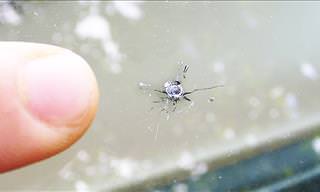
You Don’t Need to Go To A Mechanic to Fix Your Windshield
It can be so frustrating to deal with repairing your windshield. Now the task is made easy with these DIY tricks and tips.

Maintain Your Kitchen Appliances for Longer with this Guide
Learn how to clean and maintain appliances so that they last for years to come.

Dried vs. Canned Beans: Which Is the Better Option?
Can't decide between dried and baked beans? Here, we'll compare the two varieties and help you decide which option best suits your needs.

Comparing Health Benefits and Deficits of Popular Spreads
Which spread is the healthiest, and what the risks may be of long-term use?

Fiedler Dependency Model: The Right Leadership for the Task
According to this model, there is no single leadership style that universally fits every situation

7 Free Fall Mulching Materials That Transform Your Garden
Discover 7 free fall mulching materials that protect plants, suppress weeds, and enrich soil. From leaves to compost, save money while preparing your garden for winter.

10 Laundry Hacks That Save Time and Money
Want to cut laundry time in half? Then consider these 10 tried and tested laundry hacks

Nutritional Tips for Older Dogs: Diets That Work
Make sure your senior dog stays healthy with these tips.

Drilling Holes In Your Bin Can Make Your Life Much Easier!
Drilling holes in your trash can? Yes! Learn two easy tricks that will make taking out the trash much easier
 15:54
15:54
Are You Really Taking Good Care of Your Skin?
Are you really taking good care of your skin? Watch this video to find out about 19 serious skincare mistakes that are unfortunately quite common...
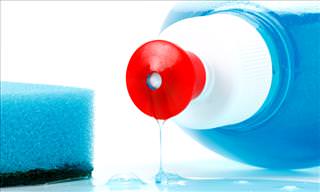
The Amount of Different Uses For Dish Soap Will Amaze You
Although we buy and use dish soap pretty much exclusively to clean dishes, it has many other uses. Here are 15 alternative uses for dish soap.

8 Ways to Make Your Floors Sparkle Like New!
Not all floors are the same, so you wouldn't expect the same cleaning method to work on them. So here are 8 ways to clean 8 different floor types.

10 Condescending Texts You Might Be Sending Unknowingly
Here are 10 common texts that often rub people the wrong way—and why.

The Science Behind the Good Taste of Leftovers
Do you feel leftover food tastes different? it's not just in your head. Here's the science behind it, and which foods make the best leftovers.

How to Clean the House Quickly and Efficiently
There are plenty of cleaning hacks out there, but which ones actually work? Find out here!

Read This to Deal With That Terrible Smell In Your Fridge!
If there's a bad odor in your refrigerator, then this guide will show you exactly how to get rid of it quickly and easily.
 10:58
10:58
If You Love Dogs, Then Avoid Doing These Things With Them
Even though you love your dog, you might be annoying it with some of your habits. Watch to find out more...

Comparing Cooking Oils: A Guide for Benefits and Risks
In this article, we'd like to provide a clear, informative comparison to help you choose the right oil for your needs.
 6:58
6:58
How to Make a Simple and Cheap Door Alarm!
Here's how you can save yourself some money by making your own door alarm at home.

Washing Fruits and Veggies: Here's What You’re Doing Wrong
Don't make these mistakes the next time you wash your fruits and vegetables.

These 12 Harmful Habits are Keeping Happiness Away!
Learn the 12 harmful, yet very common habits, keeping happiness away!

Lose Weight with These Healthy Food Alternatives
Need to lose some weight? These food alternatives will help you do just that.
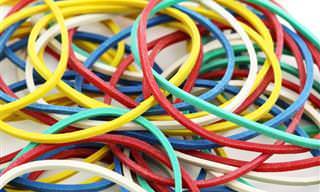
62 Great Uses For Things You Have at Home!
If you keep finding random objects around your house such as rubber bands and old clothespins, don't throw them away just yet!
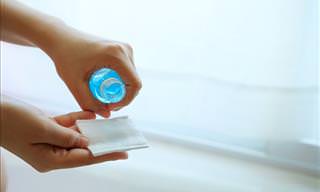
8 Terrific Additional Uses For Rubbing Alcohol!
Unsure about what you're meant to use rubbing alcohol for? Wonder no longer, as we've listed 8 brilliant uses of rubbing alcohol in this article.

WARNING! This Common Ingredient Could Be Fatal to Cats!
They say that curiosity killed the cat, but new studies now show that certain essential oils may kill your cats too if you're not careful. Learn why here...

Create a Soothing Haven at Home with These Helpful Tips
Take note of these home decor ideas that can help you create a soothing and stress-free sanctuary at home.

Don't Throw Away That Shower Curtain Liner Just Yet
Here are 10 clever ways to clean, upcycle, or reuse a shower curtain before you throw it away for good.

14 Products You Can Stop Buying to Save Big at Home
These everyday items are draining your wallet.

12 Ways You Might Be Damaging Your TV Without Knowing
These mistakes could ruin your TV—avoid them!
To enable your Ad-Free Subscription, please fill the fields below
Your subscription was successful, now you can enjoy an ad-free experience!! Note: To make sure you get no ads, please make sure to log in to your account. If you are logged in already, then refresh the page. The subscription can be cancelled at any time.


